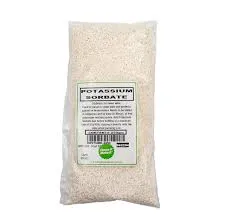
antioxidant preservative
The Role of Antioxidant Preservatives in Food Science
In the world of food science, the quest for preserving the quality, safety, and nutritional value of food products has led to the development and use of various preservation methods. Among these, antioxidant preservatives have gained significant attention for their ability to inhibit oxidative deterioration, thus extending the shelf life of a wide array of food items. This article delves into the importance of antioxidant preservatives, their mechanisms of action, and their implications for food safety and health.
Understanding Oxidation in Foods
Oxidation is a natural chemical reaction that can lead to the degradation of food products. This process often results in the rancidity of fats, loss of flavor, discoloration, and the depletion of vitamins, particularly vitamins A, C, and E. The presence of oxygen, light, and heat can accelerate oxidation, ultimately leading to a decrease in the quality and safety of food.
Antioxidants are substances that can prevent or slow down the oxidation process. They accomplish this by neutralizing free radicals—unstable molecules that can damage cells and contribute to aging and diseases. Thus, the application of antioxidant preservatives in food is vital for maintaining freshness while also ensuring consumer safety.
Types of Antioxidant Preservatives
Antioxidant preservatives can be classified into two main categories natural and synthetic.
1. Natural Antioxidants These come from plant sources and include compounds like tocopherols (vitamin E), ascorbic acid (vitamin C), and polyphenols. They are often preferred by health-conscious consumers due to their intrinsic health benefits and minimal processing.
2. Synthetic Antioxidants Common synthetic antioxidants include BHT (butylated hydroxytoluene), BHA (butylated hydroxyanisole), and propyl gallate. While effective in preventing oxidation, their safety has been a topic of debate, leading to calls for more research and regulation regarding their use in food products.
Mechanisms of Action
antioxidant preservative

Antioxidant preservatives work through several mechanisms. Primarily, they act as radical scavengers, meaning that they donate electrons to free radicals, thus stabilizing these unstable molecules and preventing them from causing further oxidative damage. Additionally, they can chelate metal ions that may catalyze oxidative reactions, effectively hindering the rate of oxidation.
For instance, vitamin E can prevent lipid peroxidation in fats and oils, while ascorbic acid can regenerate other antioxidants and protect against oxidative stress. This makes them advisable not only for enhancing shelf life but also for preserving the nutritional value of foods.
Health Implications and Considerations
While antioxidant preservatives play a crucial role in food safety and quality, there are important considerations regarding their long-term health implications. Natural antioxidants are generally deemed safe and beneficial, but the consumption of excess synthetic antioxidants may pose risks. Some studies suggest potential links between certain synthetic antioxidants and adverse health effects, including carcinogenicity.
Consumers are becoming increasingly aware of these concerns, leading to a growing demand for natural preservation methods and ingredients. This shift has encouraged food manufacturers to seek cleaner label alternatives that prioritize health and transparency.
Regulatory Landscape
In response to safety concerns and consumer preferences, regulatory bodies like the FDA and EFSA continuously evaluate the safety of antioxidant preservatives. Regulations dictate acceptable limits of their use in food, ensuring that the benefits of preservation do not come at the cost of consumer health.
Conclusion
Antioxidant preservatives are an essential component of modern food science, playing a critical role in preserving the quality, taste, and safety of food products. Natural antioxidants are increasingly favored for their health benefits and consumer acceptance, while the scrutiny of synthetic options underscores the need for ongoing research and regulation. As the food industry evolves with consumer demands for transparency and health consciousness, the future of antioxidant preservatives will likely include innovative solutions that balance effective preservation with safety and sustainability. By understanding their mechanisms and implications, both producers and consumers can make informed choices about the foods they produce and consume.
-
Comprehensive Guide to Acetic Acid as Preservative: Benefits, Uses & Future TrendsNewsNov.24,2025
-
What Is a Food Additive? Global Insights, Applications & Future TrendsNewsNov.24,2025
-
968 Sweetener: The Modern Solution for Health-Conscious SweeteningNewsNov.23,2025
-
Discover the Benefits and Uses of 965 Sweetener (Erythritol) | Tenger ChemicalNewsNov.23,2025
-
961 Sweetener - A Next-Gen Sugar Alternative for Health and IndustryNewsNov.23,2025
-
Understanding 960 Sweetener: The Modern Sugar Alternative for Health and IndustryNewsNov.22,2025
-
Everything You Need to Know About 955 950 Sweeteners – Benefits, Uses, and TrendsNewsNov.22,2025
Hebei Tenger Chemical Technology Co., Ltd. focuses on the chemical industry and is committed to the export service of chemical raw materials.
-

view more DiethanolisopropanolamineIn the ever-growing field of chemical solutions, diethanolisopropanolamine (DEIPA) stands out as a versatile and important compound. Due to its unique chemical structure and properties, DEIPA is of interest to various industries including construction, personal care, and agriculture. -

view more TriisopropanolamineTriisopropanolamine (TIPA) alkanol amine substance, is a kind of alcohol amine compound with amino and alcohol hydroxyl, and because of its molecules contains both amino and hydroxyl. -

view more Tetramethyl Thiuram DisulfideTetramethyl thiuram disulfide, also known as TMTD, is a white to light-yellow powder with a distinct sulfur-like odor. It is soluble in organic solvents such as benzene, acetone, and ethyl acetate, making it highly versatile for use in different formulations. TMTD is known for its excellent vulcanization acceleration properties, which makes it a key ingredient in the production of rubber products. Additionally, it acts as an effective fungicide and bactericide, making it valuable in agricultural applications. Its high purity and stability ensure consistent performance, making it a preferred choice for manufacturers across various industries.





